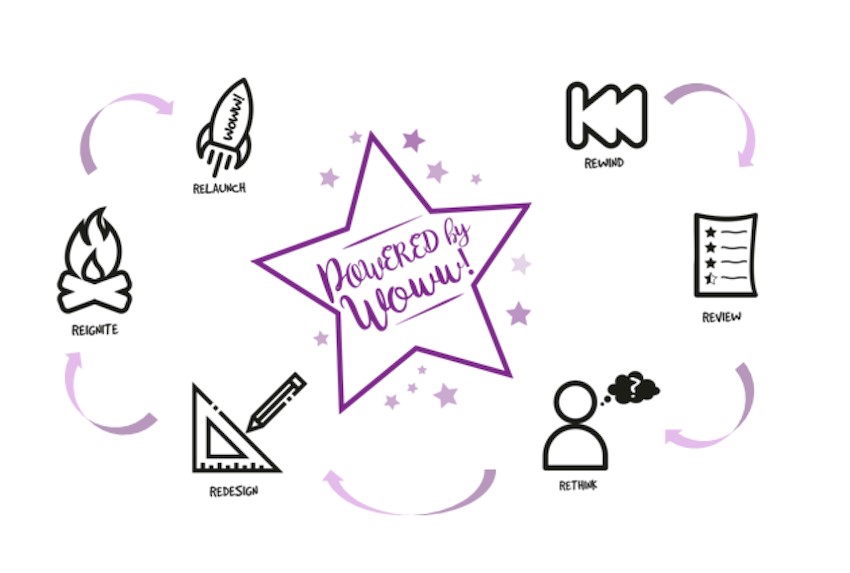When it comes to ‘planning’ for the business, I think it is safe to say that we have had our work cut out for us this year!
It’s not been easy, but we must not take our foot off the ‘go go go’ gas and revel too much in the relaxing (because let’s face it, none of us are going to be doing too much) during the festivities of Christmas and the New Year.
I don’t know about you, but I have high expectations for 2021. I want it to be a ‘big’ year for us all and in order to secure a thriving position we must face forward, move forward and plan for the future.
Now you will know by now; I am all for a rule and a juicy piece of regulation, but I want to encourage you all to look past that and see what else can be done. I want you to dig deep into the areas of your businesses that really could do with some tender love and care.
Developing a business is key, which is why it is even more important to have a framework in place to do so.
Actually, I would go so far as to say it’s not just important, it’s essential. Try doing it without a framework and a plan and I think you’ll be lucky if you scrape through with anything more than ‘just enough’.
One of the fundamental problems is the difficulty that our profession has in that, in so many cases, financial planners are trying to behave like business owners; when in truth while this may have been a natural choice, it’s not their natural calling.
I suppose what I am trying to say is that they love doing only the things that they love to do!
Luckily for you, this is where you come to the rescue.
Often, the mistake owner-managers can make is to encourage a focus which is all back to front. They spend so much time designing systems and improvements around the client proposition
Over the years, I have seen a lot of time being spent and sadly wasted on trying to find the best way of working, when some of the best practice standards exist already.
We have all come across people who are resistant to change which often includes adopting new processes.
Some of the scepticism comes from a fear of more red tape, or that having more systems and controls will somehow put unnecessary limits and restrictions on the day-to-day job of being a planner and/or of running a business.
But having good processes and a robust framework for the business isn’t about any of that.
Done right, these systems should serve as an enhancer and enabler to your business, not a limiting factor.
When people first come to either adopting standards or approaching business development more strategically, there tends to be an acceptance that they don’t have all the answers, and that can require a bit of a switch in mindset.
Financial planners spend most if not all of their waking hours charging in and changing the lives of their clients, but they may not necessarily have the required skills when it comes to their own business.
So, what can you do?
Often, the compliance support role is one of the most trusted in the team. Everyone knows that your main function is effectively to keep everyone out of jail, so I would say we know you have our back!
A small warning and I know you know this, but I’ll say it anyway.
There can be wariness around making changes to a business within a team, perhaps due to an unfounded fear that someone is going to be done out of their job. Where people fight us on change it can be those who are fearful for their own roles. Making efficiencies can uncover those who perhaps haven’t been doing their job properly, but these business improvements don’t have to mean someone effectively becomes redundant. If you flip this idea on its head, it’s more the case that if you make improvements and efficiencies, there’s more opportunity for everyone. The scarcity mindset of “I need to have lots of work to do to keep my job” isn’t helpful – busy work is not smart work.
Working from the inside out
When you are improving and developing any business, you have to start at the inside and work your way out. If I was to ask owner-managers who or what is at the centre of their ‘business’ universe, I guarantee they would say clients. This is a great sentiment, but from my perspective the centre of their universe needs to be their business first, and then their clients.
Often, the mistake owner-managers can make is to encourage a focus which is all back to front. They spend so much time designing systems and improvements around the client proposition, but are then so exhausted they don’t get to the heart of the problem, which is the business. I would recommend instead starting from the inside out, that is, focusing on the business first as the most important thing. The consequence of that is things like client service then naturally take care of themselves and fall into place.
Making the change
Having an outside third party to help with the change process can be helpful to bring a level of objectivity. As an example, if you’ve got three directors within a business going around the table on an issue, there’s a danger that ego creeps in. In that situation, there’s no one changing the frame of a discussion, so you can end up talking about all the same stuff that you’ve been talking about for years. To have that kind of independent challenge, whoever it is, is key. This could be an accountant or another external third party, but they need to be able to facilitate a conversation.
If you and your team are going on this journey, you almost need to imagine you’re starting your business from scratch. If we were starting over, how would we do it? What would we do? Would we all still have the same roles?
Within Standards International we have designed and use a process called ‘The 6R Revolution!™’ which can be helpful when going through a cycle of change and development.
This is also the structure we encourage all of our clients to use and can be explained as follows:

PHASE 1 – Rewind
1. Establish ideal outcomes and requirements –”What does best look like?”
2. Identify current situation and challenges
3. Review and analyse the gaps – ’ideal‘ vs ’real’
4. Present real vs perceived issues to all stakeholders and key persons
5. Document and share. Create the plan and share with all stakeholders and key persons
PHASE 2 – Review, Rethink and Redesign
6. Review and amend plan internally. Allocate responsibilities, timeframes, key dependencies
7. Present and launch to key project persons (team)
PHASE 3 – Reignite and Relaunch
8. Implement key project deliverables and embed new way of working
9. Measure progress, record and compare results to ’best’
10. Sign off and continual improvement of key project areas
When going through this process, it’s important not to look at any one part of the business in isolation. Aspects such as people, the proposition and the business plan all need to be looked at in the round, and all areas of the business are equally as important. We set out eight principles as part of the business review, which you can see here.

Take one area or layer at a time. Review them conceptually, but don’t get bogged down in how you need to make changes at this stage, just decide what you are going to do.
If you are talking about people, for example, you might decide you are going to recruit 10 people over the next four years. You then move on to the next decision. Know when to take conversations ‘offline’ so you don’t need get stuck on one issue.
Working in this way, you can then add in another layer of detail across the eight areas at the next meeting.
By repeating this process over time, you’re likely to end up with a taskforce or a work stream for each area of the business, with a dedicated project owner for people changes, proposition and so on. Then you regroup, and the process continues.
It’s about keeping that momentum going, and not letting it go off the boil.
Overall, if you treat your business like it’s your best client, you won’t lose focus.




